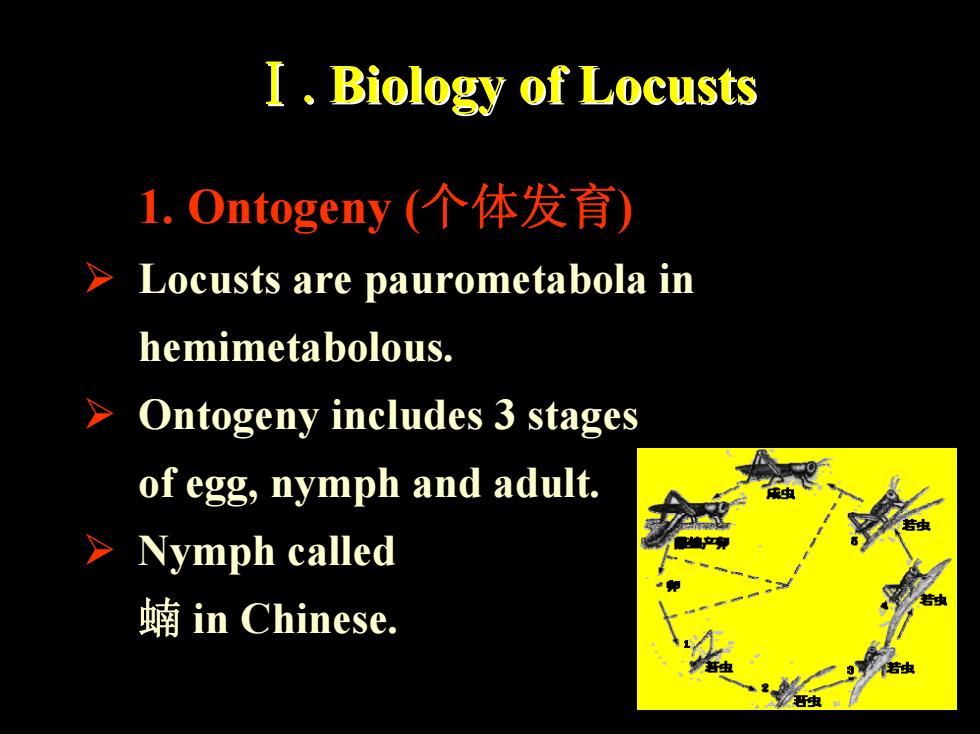
I.Biology of Locusts 1.Ontogeny(个体发育) Locusts are paurometabola in hemimetabolous. Ontogeny includes 3 stages of egg,nymph and adult. Nymph called 蝻in Chinese
1. Ontogeny (个体发育) ¾ Locusts are paurometabola in hemimetabolous. ¾ Ontogeny includes 3 stages of egg, nymph and adult. ¾ Nymph called 蝻 in Chinese. Ⅰ.Biology of Locusts Biology of Locusts
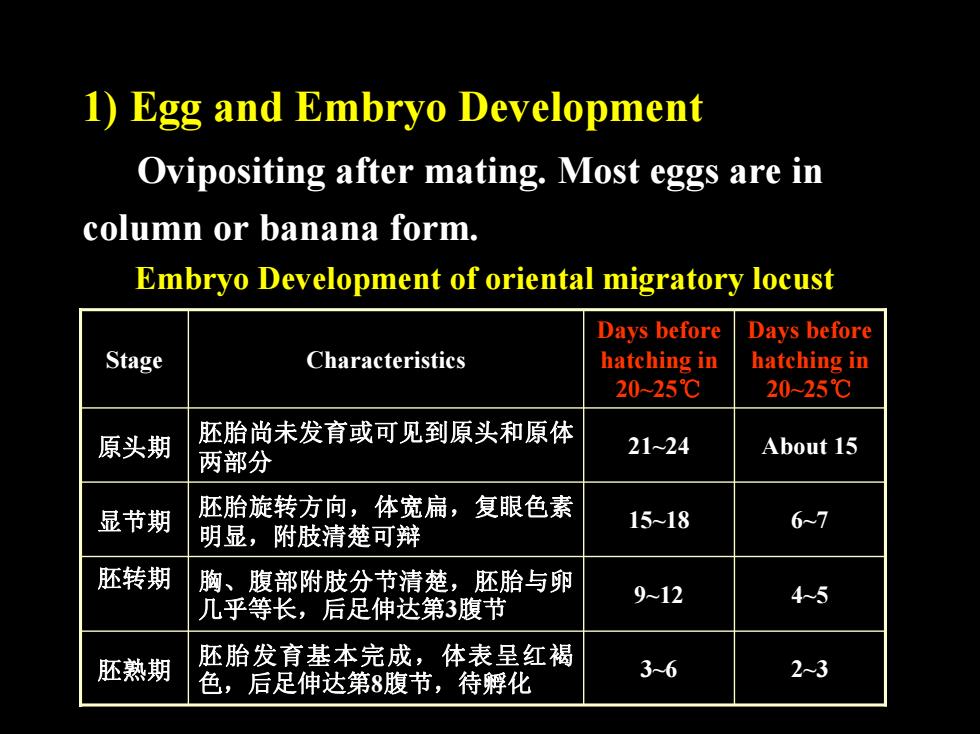
1)Egg and Embryo Development Ovipositing after mating.Most eggs are in column or banana form. Embryo Development of oriental migratory locust Days before Days before Stage Characteristics hatching in hatching in 20-25℃ 20-25℃ 原头期 胚胎尚未发育或可见到原头和原体 两部分 21-24 About 15 显节期 胚胎旋转方向,体宽扁,复眼色素 明显,附肢清楚可辩 15~18 6-7 胚转期 胸、腹部附肢分节清楚,胚胎与卵 几乎等长,后足伸达第3腹节 9-12 45 胚熟期 胚胎发育基本完成,体表呈红褐 色,后足伸达第8腹节,待孵化 3-6 2~3
1) Egg and Embryo Development Ovipositing after mating. Most eggs are in column or banana form. Embryo Development of oriental migratory locust Stage Characteristics Days before hatching in 20~25 ℃ Days before hatching in 20~25 ℃ 原头期 胚胎尚未发育或可见到原头和原体 两部分 21~24 About 15 显节期 胚胎旋转方向,体宽扁,复眼色素 明显,附肢清楚可辩 15~18 6~7 胚转期 胸、腹部附肢分节清楚,胚胎与卵 几乎等长,后足伸达第 3腹节 9~12 4~5 胚熟期 胚胎发育基本完成,体表呈红褐 色,后足伸达第 8腹节,待孵化 3~6 2~3
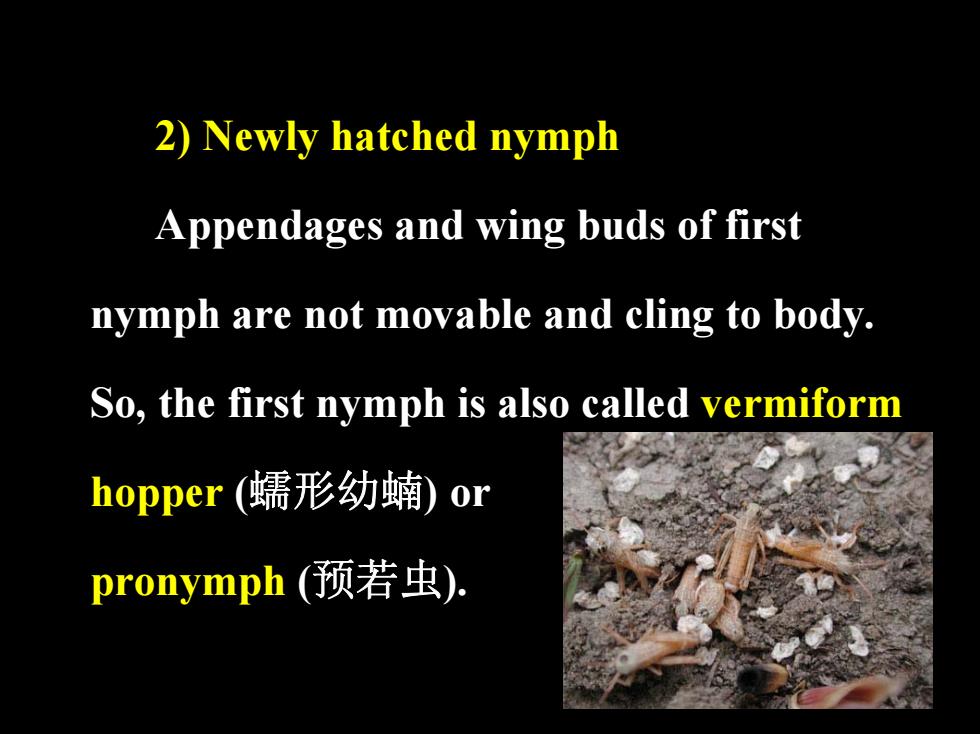
2)Newly hatched nymph Appendages and wing buds of first nymph are not movable and cling to body. So,the first nymph is also called vermiform hopper(蠕形幼蝻)or pronymph(预若虫)
2) Newly hatched nymph Appendages and wing buds of first nymph are not movable and cling to body. So, the first nymph is also called vermiform hopper (蠕形幼蝻) or pronymph (预若虫)
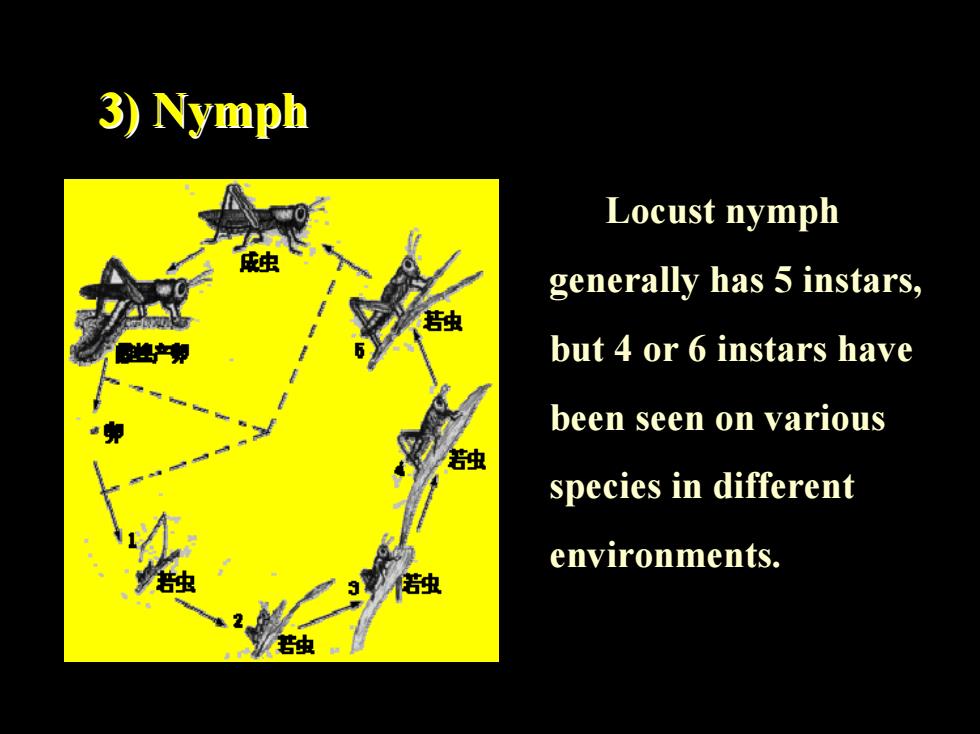
3)Nymph Locust nymph generally has 5 instars, but 4 or 6 instars have been seen on various 若独 species in different environments. 若独
Locust nymph generally has 5 instars, but 4 or 6 instars have been seen on various species in different environments. 3) Nymph 3) Nymph
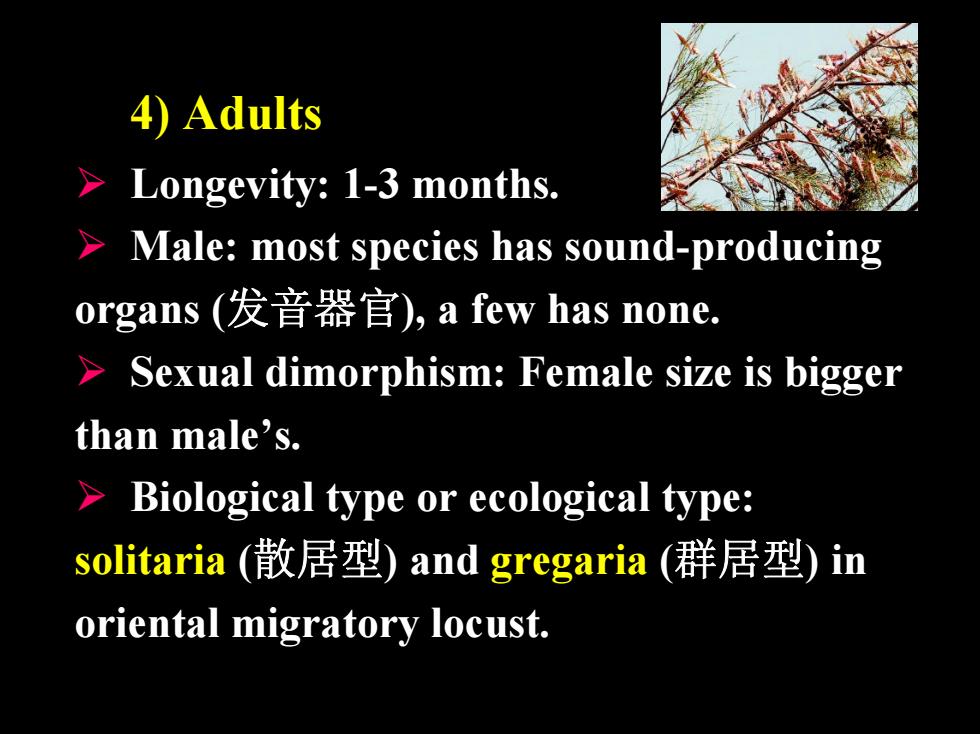
4)Adults >Longevity:1-3 months. Male:most species has sound-producing 0 rgans(发音器官),a few has none. >Sexual dimorphism:Female size is bigger than male's. Biological type or ecological type: solitaria(散居型)and gregaria(群居型)im oriental migratory locust
4) Adults ¾ Longevity: 1-3 months. ¾ Male: most species has sound-producing organs (发音器官), a few has none. ¾ Sexual dimorphism: Female size is bigger than male’s. ¾ Biological type or ecological type: solitaria (散居型) and gregaria (群居型) in oriental migratory locust